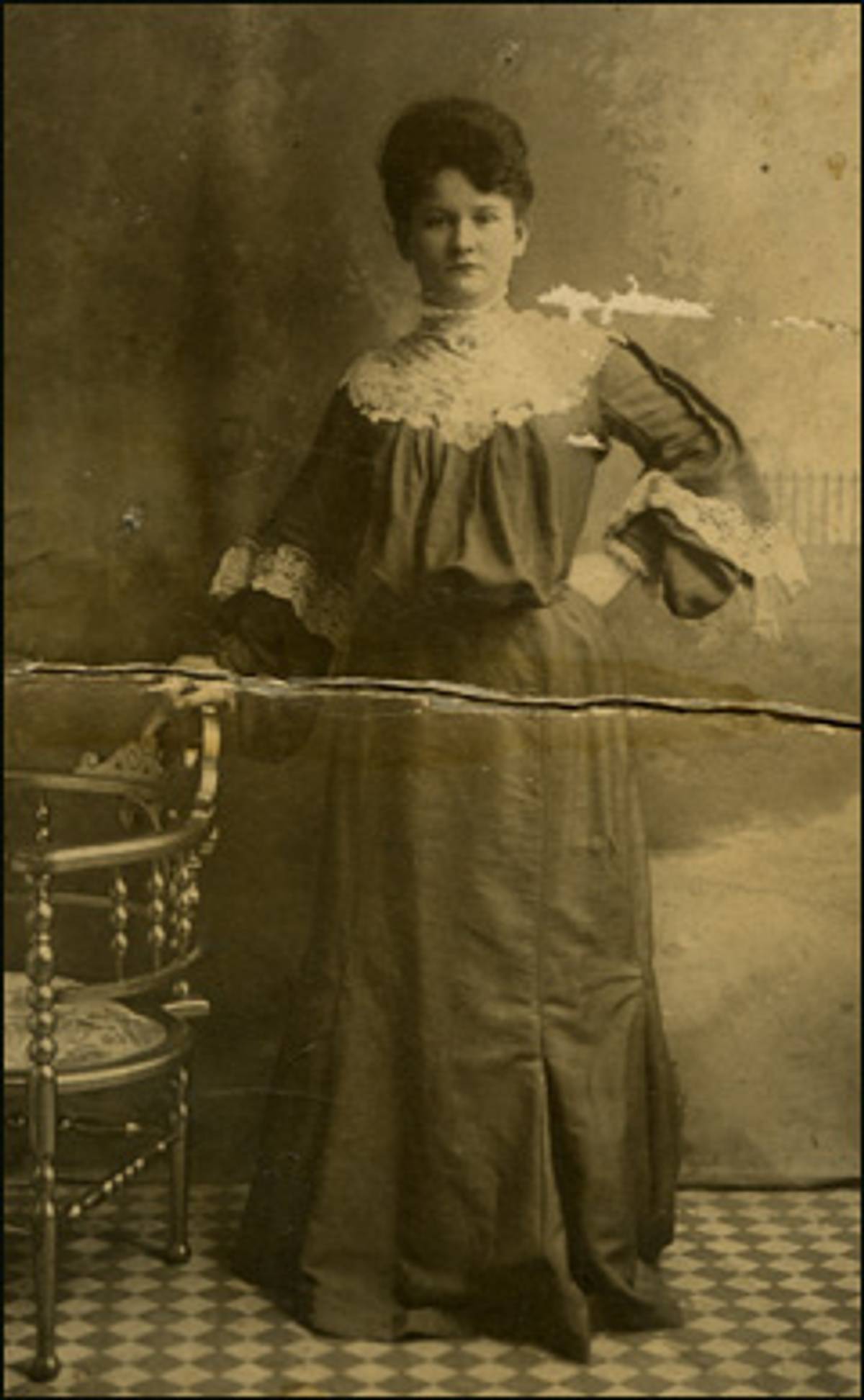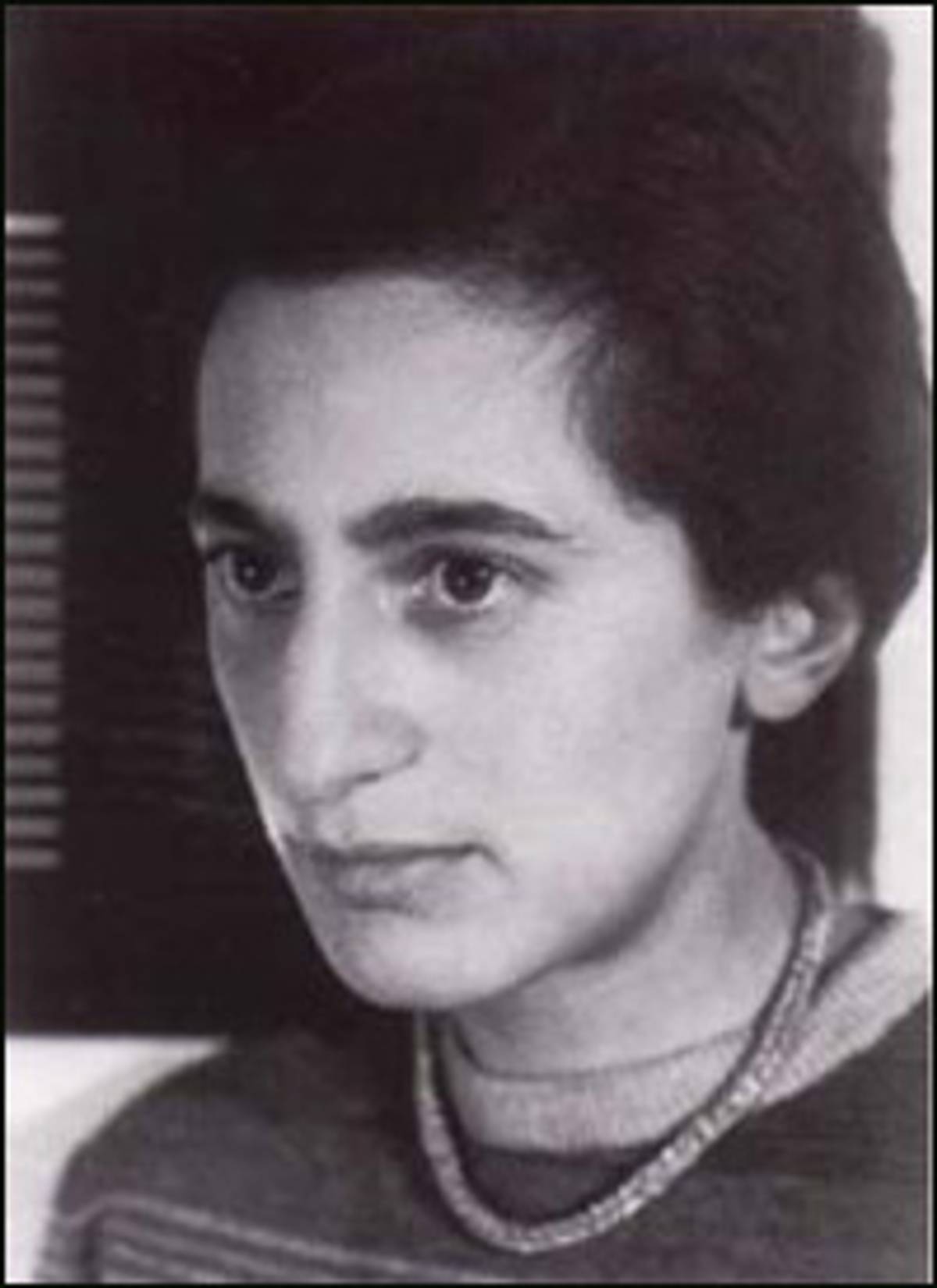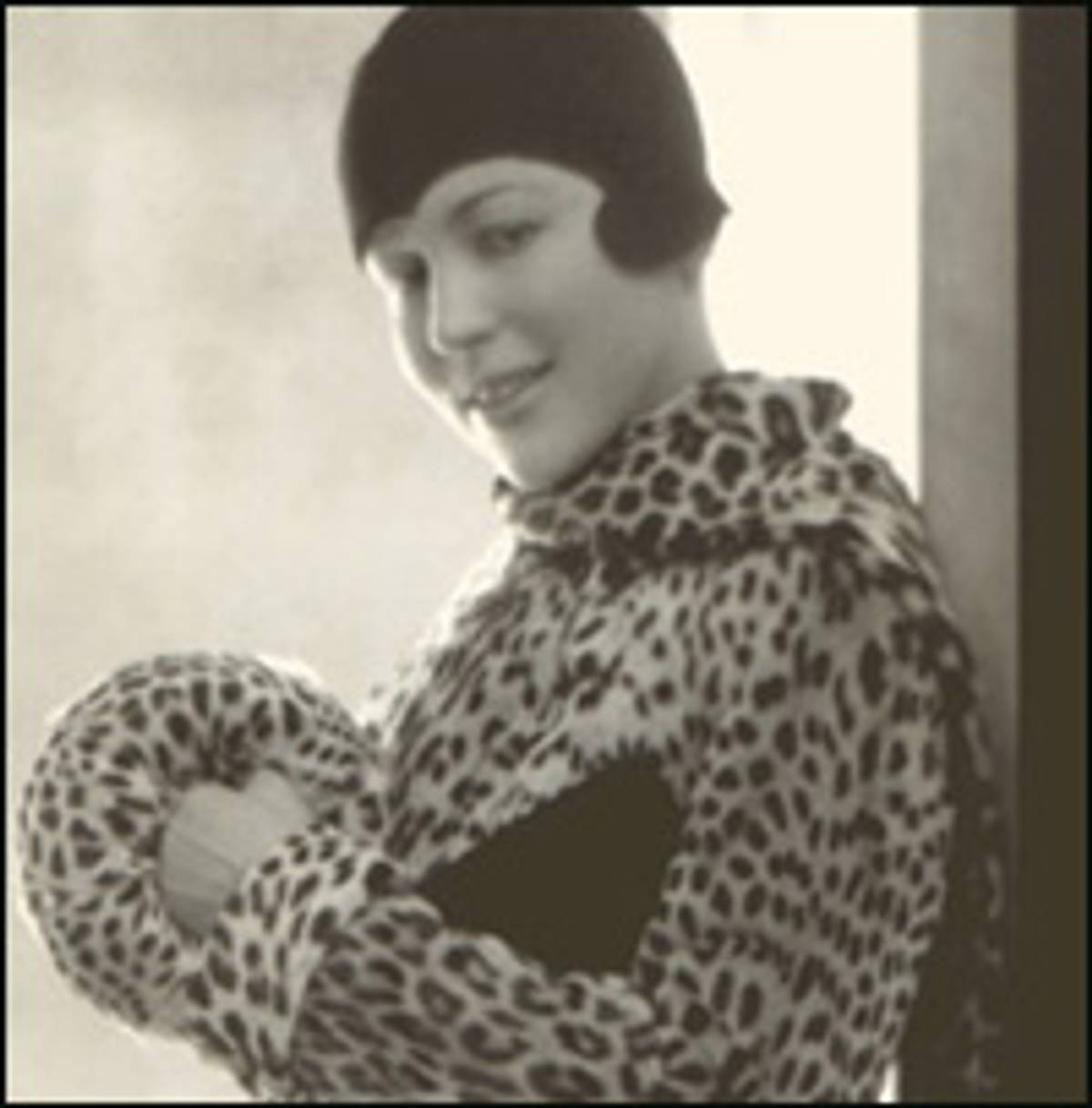In 1979, a filmmaker named Laurel Vlock started the Holocaust Survivors Film Project, a small project that eventually evolved into the Fortunoff Video Archive for Holocaust Testimonies—4,300 videotaped interviews with witnesses and survivors of the Holocaust, housed in Yale’s Sterling Library. (Steven Spielberg’s similar Shoah Foundation was founded much more recently, in 1994, after he made Schindler’s List.) Laurel was a friend of mine, and in early 1981 she invited me to see some of the first videotapes she produced. I was stunned by the stark simplicity and power of those testimonies. I was young, pregnant with my first child, and had been assisting my husband, the director of the Albers Foundation, in cataloguing the estate of the painter Josef Albers. I had yet to find my path as a writer, let alone write my first novel. The narrative power of those tapes gripped me. This is what happened, the survivors would say, and then simply, haltingly, directly, they would tell their stories as many of them had never told their stories before—completely.
Both the interviewers and the survivors would lapse into silence for long periods, and the tapes are filled with the uncomfortable and laden silences those of us who have experienced a classical psychoanalysis know so well. (Many of the interviewers were in fact psychoanalysts from the New Haven community.) Often the survivors wept with relief as they told their stories, once they got past the usual sort of summary and were invited to contemplate what they had experienced. Others seemed less moved by their own testimonies. They spoke without hesitation, rarely pausing to grope for the right phrases: This was clearly a story they had told over and over in just these words. Some were ashamed by the choices they had made, by the things they had done to survive. Others revealed acts of cruelty or violence in understated tones that startled and intrigued me. Did they really lack a sense of guilt? Did they simply regard their actions as inevitable and beyond remorse or regret? It seemed possible. My first novel, which would be published almost fifteen years later, would feature an Auschwitz survivor who feels entitled to whatever he desires, and says of himself, “I do not believe in guilt.”
Eyewitness accounts give us texture and nuance and the possibility for greater understanding. They make history human, and personal. The most extreme experiences especially require that we listen to those who bear witness. In early 2001, when I was writing my third novel, the death of Rose Freedman, the last living survivor of the 1911 Triangle Waist company fire, caught my attention. In the days following her demise, I heard her voice on the radio several times and, in her obituaries, I read quotes from the many interviews she had given over her impossibly long life. She had been famous for 90 years for surviving that fire, and she had told her story over and over through the decades. I found my writing energies being diverted by the idea of a novel that would take up the Triangle fire, which had long intrigued me because of the way it felt like part of my personal family history.

Throughout my childhood my father told me the story of the Triangle fire, always prefacing his remarks with the words, “Your grandmother was a great lady.” Pauline herself died when I was 12, and I have no memory of her ever talking about the fire, though she did occasionally sew buttons and mend my clothes with astonishing speed and skill, and I knew she had worked this way, sewing, from the time she was a child. After her death, my father brought her ancient sewing machine in its wooden cabinet into our house, and it sat undisturbed for years in a nook on a stair landing, a poignant reminder of the tiny woman who arrived at Ellis Island in 1900 and earned her living at a similar machine so long ago.
A few years ago, when I began work on my Triangle novel, I decided to use testimony to tell the main story—the story of the fire—to use a voice the way Rose Freedman’s testimony made the Triangle fire vivid for so many years. From the outset I knew that the central character of Triangle—whom I named Esther Gottesfeld—would be, like Rose Freedman, the last living survivor of the Triangle fire. Esther, I decided, would die at the age of 106, having been famous all her life for not having died on that day in 1911. She would have told her story again and again, the story of the day she survived the Triangle fire. Her story would form the organizing spine of the novel. But at the heart of her story—her testimony—would be a lie.
Having been very close to two accomplished and creative women who lived well into their nineties, I witnessed firsthand the phenomenon of the “Important Story” that has been told and retold. It was my privilege to observe both of them —my other, maternal grandmother, the Broadway composer Kay Swift, and my friend and employer, the artist Anni Albers, widow of Josef Albers—telling their stories over and over to the many scholars and journalists who came to sit at their feet. Though accomplished in their own right, both Kay and Anni—contemporaries who knew (and admired) each other—were associated with men of legendary, even iconic status. Both outlived these men, and for the rest of their very long lives, they were destined to be visited by a steady stream of scholars, journalists, filmmakers, biographers, and knowledgeable and persistent aficionados who came to call. I spent years listening to the way these visitors asked their questions, and I became finely attuned to the way the familiar stories were told and retold, with patterns of variations and discrepancies that I began to listen for.

In the years after Josef’s death, I worked on several projects involving sorting and curating in the Josef Albers archive, and I assisted Anni, who, at 77, was wheelchair-bound within a few months of being widowed, in a variety of practical ways. Often I would meet the trains of scholars who came to interview her, and sometimes I would be present throughout their visits. Over time, I heard a great deal of repetition in the interviews, whether they were about Mies and Gropius and Kandinsky and Klee at the Bauhaus, or about John Cage and Buckminster Fuller at Black Mountain College. I became fascinated by the narrow focus of these scholars’ inquiries. No matter how intriguing or provocative Anni’s remark, if it didn’t match the interviewer’s agenda, it was disregarded. One Black Mountain scholar, planning a publication and an exhibition, didn’t even want to look at the front of an extraordinary painting I pulled out of storage, once she saw, from a date inscribed on the back, that Josef painted it a year before he arrived at Black Mountain. Similarly, certain Bauhaus scholars swiftly changed the subject back to Bauhaus if Anni mentioned her friend Bucky Fuller during a break for coffee and the slightly stale Entenmann’s pastries she had me buy for guests at the local thrift outlet.

Kay was the first woman to score a hit Broadway musical, the 1930 show Fine and Dandy, which included the enduring standards “Fine and Dandy” and “Can This Be Love?” with lyrics by her husband, my grandfather, the banker James Paul Warburg. But like Anni’s, my grandmother’s own significant accomplishments were often overshadowed by the greater triumphs of the man with whom she was linked, although the more tactful visitors usually asked a dutiful question or two about her music. Some of my grandmother’s callers were musicians reviving Gershwin musicals, who came to extract her detailed knowledge of tempi and keys for all the numbers in the original productions (into her 80s she could still play Porgy and Bess, in its original entirety, from memory). Some were singers, looking for guidance about Gershwin’s original intentions for the performance of certain songs. And many were journalists or biographers with questions about George Gershwin himself.
The scope of her visitors’ interests, as with Anni’s callers, was remarkably limited. More often than not, those Gershwin-obsessed visitors foreclosed any new or surprising revelations by ignoring or cutting off her non-Gershwin chat, about, say, her friend Harold Arlen or her stint as staff composer at Radio City Music Hall writing musical numbers for the Rockettes, or her job as director of light music at the 1939 World’s Fair, or her marriage to a cowboy which resulted in a book, and then a movie starring Fred MacMurray and Irene Dunne. The Gershwin questions were so predictable that I could feel my grandmother’s response dropping into the cadences and well-worn grooves of certain stories, just as when Anni would draw a breath and once again begin a story with the familiar words, “At ze Bauhaus….”
Anni Albers and Kay Swift were both forceful, opinionated, independent women of significant accomplishment who preferred to live in the present and to look ahead, not back. (My grandmother was once extremely irked by a young journalist who gushed, “You must have had such an interesting life!” “Yes, and I am still having it,” she retorted.) But each was most in demand for what she had seen and experienced all those years ago. Anni clearly resented living in the shadow of the great master, even as she pretended to be surprised and humbled when a visitor’s eye was caught by one of her screen prints, though our preparation for the interviewer’s arrival had invariably included strategically propping this very print in the visitor’s path. My grandmother certainly wanted recognition for her role in George Gershwin’s life, and also for her role in preserving his legacy, work she did tirelessly for decades, often at the expense of her own musical output. Yet she was also very private about what went on between them, and generally unwilling to discuss any intimate aspects of their relationship. Soon after his death she destroyed all of his letters, much to the irritation and dismay of numerous Gershwin scholars.
Anni and Kay both edited and revised the stories they were compelled to repeat. There were the conscious elisions, of course, and there was, no doubt, all kinds of unconscious censorship and alteration of history as well. Especially when confronted by researchers who felt entitled to full access to any information on their chosen subject, both women were capable of withholding just a few more details, changing the story just a little bit more. Their stories were essentially true—I am not suggesting otherwise—and they were both witnesses to significant events in twentieth century cultural history. But their testimony had been channeled and shaped by so many things, from their own ambivalences to the inevitable lapses of memory over time, to the expectations and agendas of those asking the questions.
In my novel Triangle, Esther Gottesfeld tells her story of the Triangle fire over and over. Her account is essentially true, but it also contains a very significant lie. This lie, told for 90 years, echoes through all of the transcripts and recordings of her testimony. At the beginning of The Plague, Camus writes that a narrator’s “business is only to say: ‘This is what happened’ when he knows that it actually did happen.” Esther has told her story for 90 years, and while her story is not quite what she says it is, her secrets do not make her story less emotionally true. Over those 90 years, her story has grown in power as she lives with the consequences of her choices—both on the day of the fire and all the days after that, too, when she tells her story the way she chooses to tell it.
Katharine Weber is the author of several books, including the forthcoming novel, True Confections.